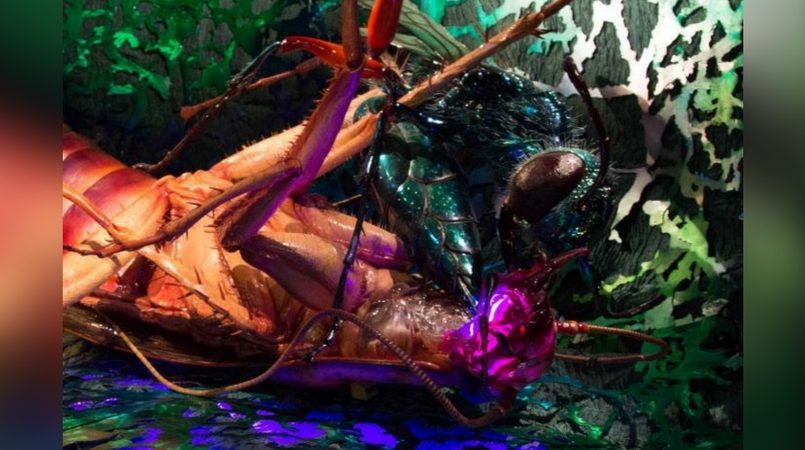
Melbourne Museum's latest blockbuster exhibition features larger-than-life model insects and interactive games, but the real stars are the bugs themselves.
On show until October 15, Bug Lab: Little Bugs, Super Powers is a co-production between New Zealand museum Te Papa and special effects company Weta Workshop.
Te Papa entomologist Dr Phil Sirvid said the show was "a celebration of the genius of bugs".
Here's four freaky insect facts from the exhibition.
Dragonflies out-hunt lions
Lions may be kings of the jungle, but they are amateur hunters compared to dragonflies, Dr Sirvid said.
"A lion hunting on its own gets its dinner about one time in five; dragonflies, typically, it's 95 out of 100."
Dr Sirvid said it was the dragonfly's agility at flying that gave it the edge when hunting other insects.
"It can go from a standing start to pulling a mosquito out of the air in no time flat," he said.
"It's got four wings that can move independently of one another, it's got amazing optical processes to help track prey."
Jewel wasps turn roaches into zombies
Found in Africa, the Pacific Islands and South East Asia, the female jewel wasp uses its venom to control cockroaches.
She stops the cockroach by stinging near its hind legs, before reaching further into its nervous system and stinging areas that cause the roach to start cleaning itself.
She then leads the cockroach "like a zombie slave" back to her nest where she lays an egg on its body.
When the wasp grub hatches it eats the cockroach alive, leaving its essential organs for last.
Dr Sirvid said it was only the female jewel wasp that turned cockroaches into zombies.
"The males are pretty chill; they just go and visit flowers and do that sort of thing," he said.
Japanese bees cook hornets alive
Japanese bee farmers use European honey bees because they produce higher yields than the local variety.
But the European bees are defenceless against the Japanese giant hornet, which search alone for bee hives and then attack in groups.
"Thirty hornets can take out 30,000 bees in three hours," Dr Sirvid said.
Japanese honey bees, however, have co-evolved with the hornets and have developed a defence mechanism.
They jump on any hornet scout arriving at their hive, forming a "ball of bees" around the hornet.
The bees then decouple their wings and vibrate their wing muscles to create warmth, the same technique they use to warm up the hive.
They raise the temperature to a degree warmer than the hornet can stand, baking their predator alive.
Orchid mantis lures prey with beauty
For a long time it was thought that the orchid mantis, found in Malaysia and other parts of South East Asia, hid among orchids ready to pounce on its prey.
But Australian researchers discovered the orchard mantis lures its victims by "enticing, not ambushing".
"Bees, flies and other insects see more of the world in UV than we do," Dr Sirvid said.
"If you see flowers under UV light they look incredibly different, and these are markers to signal the availability of pollen and nectar."
It is in the UV spectrum that the orchard mantis outshines the flowers around it.
"A bee will think, 'Oh, this is the mother lode of pollen and nectar, I'm going in,' and this is the last thing they ever do."
